- News
- Reviews
- Bikes
- Components
- Bar tape & grips
- Bottom brackets
- Brake & gear cables
- Brake & STI levers
- Brake pads & spares
- Brakes
- Cassettes & freewheels
- Chains
- Chainsets & chainrings
- Derailleurs - front
- Derailleurs - rear
- Forks
- Gear levers & shifters
- Groupsets
- Handlebars & extensions
- Headsets
- Hubs
- Inner tubes
- Pedals
- Quick releases & skewers
- Saddles
- Seatposts
- Stems
- Wheels
- Tyres
- Tubeless valves
- Accessories
- Accessories - misc
- Computer mounts
- Bags
- Bar ends
- Bike bags & cases
- Bottle cages
- Bottles
- Cameras
- Car racks
- Child seats
- Computers
- Glasses
- GPS units
- Helmets
- Lights - front
- Lights - rear
- Lights - sets
- Locks
- Mirrors
- Mudguards
- Racks
- Pumps & CO2 inflators
- Puncture kits
- Reflectives
- Smart watches
- Stands and racks
- Trailers
- Clothing
- Health, fitness and nutrition
- Tools and workshop
- Miscellaneous
- Buyers Guides
- Features
- Forum
- Recommends
- Podcast
 How to make your bike more comfortable April 2021
How to make your bike more comfortable April 2021How to make your bike more comfortable - check out our 14 tips
No matter how short or how long your ride, you’ll enjoy it much more if you’re feeling comfortable. Don’t suffer in silence, there are lots you can do to improve the fit and feel of your bike!
Yes, there are times when you’re legs are going to be burning as you power through the pedals – that’s a satisfying pain (most of the time) as you are getting fitter. But not all pain is good pain and it’s not so sensible or enjoyable riding through this.
Feeling comfortable as you ride won’t just make cycling a more pleasant experience, it could also prevent injury and even benefit your performance. You’re unlikely to be able to cycle fast if your back and neck are aching because you’re using the wrong handlebars, for example.
We spoke to Kyle Russ who is a Senior Biomechanical Engineer at Trek Bikes and Tim Allen, founder of Soigneur Bike Fitting to understand what changes are worthwhile making and how these can help make your riding a much more comfortable experience...
1. Check your saddle positioning
Before trying a new saddle, first make sure your current saddle is set up correctly, as it could be this that’s causing you discomfort.
“I will always say to make sure that the saddle is in a good position before trying different saddles with riders," Tim notes. " I’ve learnt through my clients that the wrong style of saddle in the right place can often be a lot better than the right saddle in the wrong place."
Get the height right
“One formula I use as a starting point is taking an inseam measurement without socks and shoes and deducting 10cm from that,” Tim says.
Although, he adds that flexibility and functional ranges have quite an impact on saddle height.
Sort out your saddle tilt
“You want the sensation that the saddle is holding you in place, so you’re not sliding forward on it,” Tim explains. “If an individual finds themself moving about on the saddle the first thing to look at is saddle angle.
“You’re going to be putting too much weight into the handlebars if you’re sliding forwards on the saddle and you’re likely going to end up bracing to support your upper body weight to keep yourself on the saddle.
"This also alters which muscle groups are going to be active through the pedal stroke.
“Make sure that the saddle is in a neutral position and that’s not necessarily dead flat, it’s very individual,” Tim says.
2. Switch your saddle
If you’re still not comfortable on the saddle that came fitted to your bike, change it.
People sometimes think that a large, squishy saddle will be the most comfortable, but that’s not always the case.
Kyle explains: “If a saddle is sized for you, aligns with your bone structure, the posture you’re riding in, if it unloads your soft tissues to an extent that is right for you, then a firm saddle reduces the frictional component that adds up over time. This friction is the unwanted rubbing that can lead to a break in the skin or a saddle”.
The fit is incredibly important and that’s a very individual matter. So how do you decide which one is best for you?
“It depends on what sort of riding you’re doing and what size saddle you need to support you specifically,” Kyle notes.
Find a supportive shape for your style of riding
“Road cyclists can have many different postures. Some of us have a perfectly upright pelvis on the saddle – we refer to that as a posterior tilt – and some may be riding in a more aggressive position, with a lower front end, with your pelvis rotated forwards.”
Look specifically at the angle of the back flat portion of the pelvis, the sacrum, and make a qualitative assessment, Kyle suggests.
“Ask yourself, is my pelvis rotated more upright or is it shifted forwards when on the saddle?"
That can help you narrow down the type that'll suit you best. Neck pain can also be a sign that your saddle isn’t suitable for you.
Kyle explains: “If you can’t stand being on your saddle, that forces posterior rotation, with your pelvis rotating back. The spine becomes very flexed. You still need to look at the road ahead so that leads to hyperextension in the cervical spine.
“The saddle is the culprit because it’s not supporting a healthy posture," Kyle stresses.
“Whether you’re at a 30° torso angle or 90°, a healthy posture is a neutral spine – a tall spine from the sacrum through to the skull. You can be in an aggressive position with a neutral spine or you can be in an upright position with a neutral spine. In both cases, it’s the saddle that allows that to happen or not."
Make sure the width is right
Honing in on the right size is the next thing.
“Your sit bone width is key,” says Kyle. “Even though we don’t typically sit bolt upright on our sit bones, it’s really the only point of reference to say how wide or narrow the pelvis is when it is rotated off the sit bones and more onto the pubic rabi.
Narrow down on the discomfort you're experiencing
“We want the primary support on the bone structure," Kyle begins.
"Then for some riders, a little bit of support on the perineum helps distribute the load and reduce peak pressure on the bone. For some riders that’s okay, for others zero pressure on the soft tissues is the answer.”
It’s important to work out what’s bothering you as a rider while on the saddle, Kyle notes.
“If it’s high bone pressure as though you’re sitting on a wooden gym floor then you may need a saddle with more padding under the bone structure to soften that.
“But for a lot of riders, the issue is numbness or tingling of the soft tissue. If that’s the case, it’s about looking for a saddle that removes the pressure from that area. It can be a cutout, a split or just a generous relief area.”
Other technology helps with eliminating pressure from the soft tissue area, such as Specialized’s Mimic concept, which could work better for you. The harsh sides of a cutout could cause numbness so Mimic uses multi-layer materials to minimise soft issue swelling.
Just remember, soft tissue relief is specific to you and so a saddle that works for someone else, may not necessarily work for you.
Many bike shops will be able to help you make your choice using a saddle finding system. Selle Italia has its I.D. match system and Specialized has its Retül Digital Sitbone device. You give some basic information about yourself and the type of riding you do, then the bike shop assistant takes some measurements, enters them into the computer and gets you some recommendations.
Other saddle manufacturers offer test saddles, or guaranteed refunds and replacement saddles until you find your perfect perch.
3. Change your handlebar
Check the width
Drop handlebars come in different widths and bike manufacturers fit the bar width that’ll be right for most riders who buy a particular sized frame, but that width won’t suit everyone.
“For my clients, I tend to reduce handlebar width in a bike fit more than I would increase it," Tim says. "Based on my research into it, I would say that generally, the sizing standards of handlebar widths across bikes are too wide."
For determining suitable handlebar width, Tim says, “the general rule of thumb is that the hood position should be in line with the shoulder—the contact through the arm should be direct.”
But Tim adds: “That isn’t always the case because handlebars have a direct impact on handling, so wider handlebars can offer more stability which you may be after.”
How can you tell if you need to size down your bars? Tim says: “If an individual is turning their wrists inwards to support themselves that’s a good sign that handlebar width is too wide.”
Consider different shapes
The distance of the drop also varies between bars, as does the reach and even the shape of the drop section. Some are round, others are more anatomically shaped and you may find a change here helps with hand comfort.
If you feel the drop is too deep or the reach is too far, you might be better off shifting to a compact handlebar.
“Different shaped handlebars suit different riders, but often for recreational riders a more compact, shallower drop handlebar works better as it makes the drops more accessible,” Tim says.
The bottom of the drops should be parallel to the ground. That section shouldn’t be pointing too far up, Tim stresses.
Check your hoods
The placement of the hoods also plays a part in comfort. “The hoods should be positioned at an angle that feels neutral to your wrist so you’re not having to reach over the tops of the hoods to get your hand around them. This way distribution should be balanced through the hand,” Tim says.
4. Sort out your brake reach
If you have smaller hands it can be a struggle to reach the brake and lever reach, and so you may not feel fully in control when it comes to braking.
What you may not realise is that it’s possible to adjust this reach—that’s the distance between the bar and lever.
“Out of the factory the brake levers will often be set as far out as you can get them. Most modern levers, both mechanical and hydraulic, can now be adjusted so you’re able to bring the brakes closer to you.”
It’s important to make sure the brake levers are accessible from both the hoods and the drops, Tim notes.
“By setting this up right, it gives riders more confidence in both handling and being able to stop when required, as well as being able to use the drops at the most appropriate times, usually when descending.
“If you haven’t got appropriate access to your brakes, ultimately riders won’t be able to get what they want to get out of cycling.”
There are various different designs out there but you'll usually control reach via a small bolt.
5. Change your bar tape
If you ride with old or poor quality bar tape, every little bump in the road gets transferred directly to your hands and arms. Across the course of a ride, each minor shake can add up to a lot.
Good bar tape can filter out vibrations that are heading for your wrists, and it doesn’t have to be expensive. Pro riders sometimes fit a double-layer of bar tape, especially for the cobbled classics like Paris-Roubaix, and you can do the same, but be warned, getting the finish to look nice is a bit tricky.
Another option is fitting shock-absorbing gel pads underneath your bar tape.
“I often use gel-backed handlebar tape rather than really thin tape. The gel backing definitely helps with absorbing road vibrations,” Tim says.
You can get shock-absorbing gel pads as a standalone item, or Specialized’s Body Geometry Bar Phat tape comes with gel pads that you fit to both the top of your handlebar and the drops for tailored cushioning in crucial areas.
It is a bit down to personal preference. As Tim says, some riders may prefer the feel of a firmer contact with handlebars for better grip and control, and can only get this from a much thinner tape.
6. Adjust your cleat positioning
There are three things to take into consideration with the cleat position, Kyle explains: the fore/aft position (how far forwards or backwards the cleat is relative to the toes/heel), the medial/lateral (how close to the inside of the foot versus the outside) and lastly the orientation (angle of the cleat).
Kyle recommends: “With the fore/aft position, get the centre of the cleat roughly one centimetre behind the ball of the foot.
“This is because when we push and we’re transferring force from our foot to the pedal if the cleat is too far forward we will push on our metatarsal heads, which are pretty sensitive.
“If we just slide the cleat behind the metatarsal heads, we are less likely to create that aggravation, that numbness, tingling or hot spot, because we’re not localising the force on a sensitive area.”
Then there’s the medial/lateral position, that’s based on your hip width Kyle explains.
“You want your feet underneath your hips. If you have a narrower pelvis, then you want to slide the cleat to the outside so that your feet come in.
“If you have a slightly wider stance, you can slide the cleat to the inside, which will push your feet outside on the bike.”
It can be hard to wrap your head around the change in cleat position and what it’s doing to your feet and actually changing with your bike position, so Kyle recommends flipping the shoe so you’re looking down at the top to help with the visualisation.
Finally, there’s the orientation of the cleat which needs to replicate the natural motion, so you’re less likely to create issues.
For this, Kyle suggests looking at the way your foot points as you run and as you impact.
“If you are toe-in when you’re running, the angle of the cleat to be rotated outwards, whereas if you are heel-in running, the angle should be rotated inwards.”
7. A different insole may be the solution
Insoles inside your cycling shoes can help with foot collapse. If you have knee pain, particularly on the inside of the knee, an insole may be a solution for improved comfort, Kyle notes.
Also if you take your insole out of your shoe, and you see a lot of wear at the toe end, Kyle says this may be a sign that you’re looking for stability at the arch, and an insole could help.
“With running, there’s a foot strike and then toe-off phase of the gait, whereas in cycling it’s a rigid attachment.
“If you don’t do off-the-bike conditioning work, and you don’t run regularly, often the arches of the foot want to collapse. What an insole does is it helps prevent that collapse,” Kyle explains.
8. Fit wider tyres
If you’re still running super-skinny tyres, swapping to wider rubber should improve your comfort.
> Why you need to switch to wider tyres
With a larger chamber of air between you and the road, a wider tyre allows you to drop the pressure without running the risk of a pinch flat where the inner tube gets punctured as a result of being sandwiched between the rim and the ground. The lower pressure also increases the amount of cushioning you get from the road and this is what will help with comfort.
If you’re worried that wider tyres will slow you down, don’t be. You could even ride faster with increased width. The majority of riders in the pro peloton are on 25mm tyres rather than 23s for most road stages these days and there are lots of rolling resistance data out there that show 28mm tyres to be speedy too.
If you’re riding a standard road bike, you might be able to fit those 28mm tyres to increase comfort further – it just depends how much space you have at the chain stays, seat tube, bottom bracket and fork.
With most rim-brake bikes the brakes are a limiting factor when it comes to tyre width. Many disc brake-equipped bikes offer much more clearance so if you’re looking to run wide road tyres, it might be worth making the switch to discs.
Tubeless is an extension of this. Tyres without an inner tube have no chance of pinch punctures, so you can let even more air out of the tyres, maximising the comfort.
9. Swap your seat post
Suspension seat posts exist mainly for mountain biking, but you can fit one to a road bike if you like for extra comfort. USE’s Vybe suspension seat post (£85), for example, provides 50mm of bump absorption.

If you don’t want to go that far in pursuit of comfort you can fit a seat post that’s designed to flex more than usual. Carbon fibre seat posts are also commonly associated with a reduction in road buzz, but the difference is often pretty small.
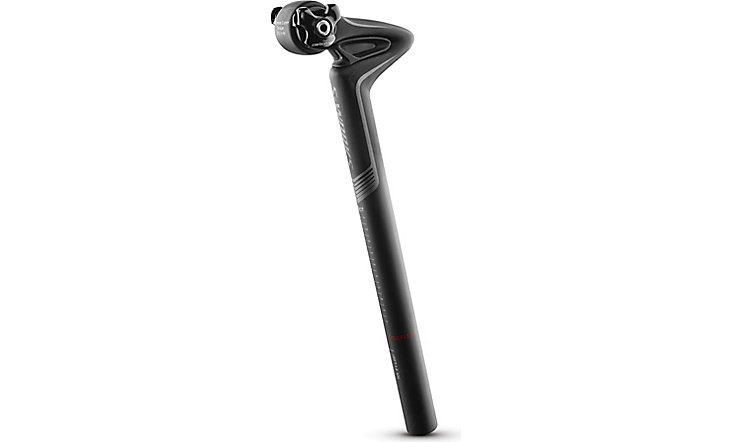 Changing your seat post can also alter your position on the bike which is another great way to get more comfortable. One with zero setback can, for racers, help to get your weight further forward and make it easier to get low at the front end. At the other end of things, a longer setback can be great for more upright positions.
Changing your seat post can also alter your position on the bike which is another great way to get more comfortable. One with zero setback can, for racers, help to get your weight further forward and make it easier to get low at the front end. At the other end of things, a longer setback can be great for more upright positions.
10. Switch your stem
Stems come in various different lengths and angles, giving you the opportunity to alter your ride position significantly.
If you feel like your handlebar is too far away, you can swap in a shorter stem to reduce your reach. On the other hand, if you feel like your handlebar is too low, you could add a spacer underneath the stem, provided there’s room on the fork steerer. You could also fit a stem with a higher rise, or perhaps just flip the stem you already have.
But first, Tim explains that the saddle has to be the right one for supporting you and in the right position before considering whether the reach of the handlebar is too far away or not, and therefore whether it is the stem you need to alter.
“One interesting thing that happens regularly in bike fits is riders come in with the assumption that their reach is too long and that we’ll put on a shorter stem or position the stem higher to make the handlebars more accessible. But often what ends up happening is that they’ll need a longer stem, just from the effects of getting the saddle position and selection right.”
To help gauge if your stem length and stack height are appropriate, Tim explains that by reaching into the handlebars you want to feel as though you’ve got a neutral 90° bend through your shoulders and that you can soften your elbows, without the feeling of falling off the front of the saddle.
“If you find it hard to soften the elbows and you feel like when you do you’re going to fall off, it’s likely that your centre of body mass is too far forwards, and saddle position can play such a big part in that.
“Increasing the handlebar height will move your centre of mass further back while reducing the handlebar height will move your centre of mass forwards. There are good reasons to go either way. It depends a lot on the individual's riding style and what their aim is.”
11. Have a bike fit
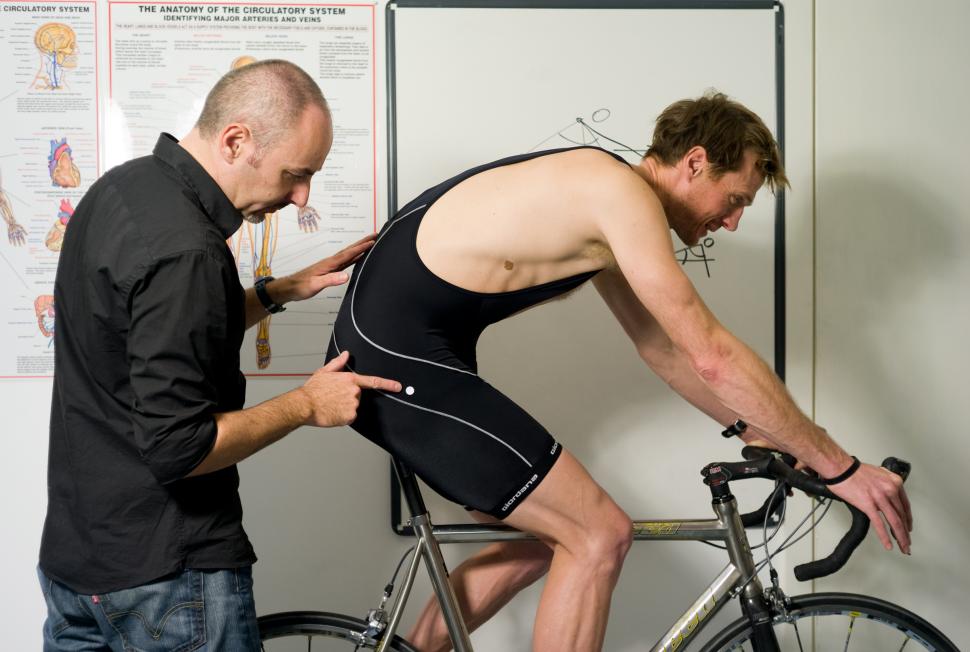
Even with all this advice, it can be really tricky to get all the variables right and working well together in a setup that is perfectly comfortable for you. If you’re really struggling, a professional bike fit can be a worthwhile investment.
Essentially, this means that a specialist bike fitter will get everything adjusted so it is set up just right for you. Some shops offer a fit as you buy a new bike, or you can book an appointment for improving the setup on your existing bike.
There are many variables to get right – saddle height, saddle position, reach to the handlebar, handlebar height, the shape of the handlebar, crank length… the list goes on.
Every rider is different in terms of physical dimensions, flexibility, strength and weaknesses, as well as riding objectives. Bike fitters look at how you actually ride, rather than just taking some measurements... and voila!
> Should you get a bike fit? The 9 pitfalls to avoid
A bike fitter might change components – the stem or seatpost, for example – or could just tweak your setup. Think of it as a long-term investment in being comfortable and staying injury-free. Having the right set up can also improve your efficiency and handling.
Tim explains: “A bike fit looks objectively at every touchpoint. It’s not necessarily just one element of the bike position that’s causing a particular problem. Instead, it’s all of the contact points that can contribute.
“Cycling is not the most natural sport or position. It’s about understanding how the body functions and how the bike functions, so you know how those stick together.”
12. Change your padded bib shorts
If changing your components and set up doesn’t provide the comfort you’re after, it may be that your clothing is the issue. Try new gear, in particular padded shorts. Getting the sizing just right is very important as it makes such a difference to the support and comfort provided.
The chamois takes the edge off peak pressure and reduces friction, Kyle explains. Some pads have channels or perforations for wicking sweat away—this can also massively help with comfort levels. Seams are also placed to avoid chafing.
Cycling shorts are designed to be worn without underwear. Wearing underwear brings in another layer that can cause friction and rubbing.
From a fit standpoint, it’s important the shorts are neither baggy nor loose as this reduces the effectiveness of the pad.
“Make sure that your padded shorts are well fitted and the chamois doesn’t move around. If there’s lots of movement, then you’re likely to get increased friction from the chamois and have greater chances of saddle sores,” Tim stresses.
Different pads are fitted in bib shorts, with shapes to suit different anatomies. Variable levels of foam thickness and density are incorporated to keep the pad thinner where you don’t need much cushioning, and more padding just where you need it.
Kyle says: “Make sure the pad is wide enough so when you sit on the saddle its not narrower than your saddle – this is key.
“If your chamois is narrower than the saddle, it will introduce pain or rubbing points. You might blame the chamois because you don’t realise it’s the stitch that’s holding the chamois in place that’s actually rubbing you.”
Issues concentrated on one side may be an indication that this is what’s causing you discomfort.
“If the chamois doesn’t cover the width of the saddle, usually one side is well protected with the chamois, then the other is making contact with the stitch and rubs,” Kyle says.
We’re all different shapes, and so this, and your riding style, can influence the type of pad that will work best for you. It’s worth trying them out before you buy, where possible.
Shoulder straps on bib shorts help keep the shorts securely in place and the straps avoid a waistband digging into your stomach, which can be very unpleasant when riding in the shifted forward bike position.
Our full guide to finding the best pair of bib shorts for you can be found here, and it includes a roundup of some of the most impressive options we have tested, for both men and women.
> Endura launches new Women’s Pro SL EGM Bib Shorts with saddle sore taboo-busting approach
13. Try padded gloves
Mitts and full-finger gloves can help a lot too. Padded palms prevent numbness by absorbing buzz and vibration from rough roads and the added grip can help with confidence and control.
“Padded gloves help redistribute the load on the hand and reduce peak pressure on portions of the palm,” says Kyle.
Another good thing about gloves is that they’ll save your hands if you're unlucky enough to come off.
Our full guide to summer cycling gloves can be found here, while warmer longer fingered options are over in this guide.
14. Use chamois cream
If you’re new to cycling, you may have heard talk of a mysterious preparation called chamois cream. You may have wondered what chamois cream is, but, realising that it’s something to do with your undercarriage, been too embarrassed to ask.
Thankfully it’s just a basic barrier cream that can be applied to lower the chances of saddle soreness. It reduces friction as you pedal and it’s usually antibacterial.
> Buyer's guide: 10 of the best cycling chamois creams to look after your bum
There are three situations when chamois cream is particularly useful: for very long rides; for indoor training, where you're on the saddle almost all the time; and for returning to cycling after a few weeks off.
As you ride, your skin adapts to the pressure of your weight on the saddle and toughens up. If you take a break from cycling your skin returns to its original softness, at least partially. Chamois cream helps keep your bits comfy until they toughen up again.
A ride substantially longer than you usually do is similar. Your undercarriage may be toughened up for 50- or 60-mile rides and you may have done enough training you’re confident of completing a century, but the extra distance can make you sore enough that the last few miles are no fun at all. Chamois cream can come to the rescue here.
> Health Q&A: Ischial bursitis – more than just a saddle sore
Chamois creams also contain anti-bacterial and anti-fungal ingredients to help reduce the likelihood of skin infections. Basic hygiene helps too. Get out of your shorts and shower as soon as possible after a ride and always wash shorts between wears. But an extra line of protection against the dreaded saddle sores can’t hurt.
Comments from the road.cc archives
This article has recently replaced an older road.cc feature on how to make your bike more comfortable. While that article is now retired, there were plenty of useful tips and observations from readers in the comments section, so we’ve archived the highlights for you below:
“I reckon the saddle is way more important than the shorts. A poorly fitting saddle will be uncomfortable no matter what shorts you're wearing whereas poorly fitting shorts will take time to become uncomfortable/chafe if the saddle fits nicely.”
From hawkinspeter
“I find a Brooks leather racing saddle to be fantastically comfortable. But the biggest surprise for me was that using SPD sandals would end up boosting my performance on Strava segments. The sandals have a massive rubber sole which does a lot of wonderful shock absorption but standard-theoretically should be stealing watts on short power segments. My guess is that lack of comfort plays a role in limiting sprint output power especially for the aging (55) - the sub-conscious animal brain is instinctively trying to protect the knees and joints from damage by limiting power. Adding a little cushioning allows more power to be output with less knee/joint stress.”
From ch
“Ride a high-quality and well-fitted titanium or steel bike in the first place”
From simonmb
“It's not all about spending money though, eh? These things all help I'm sure (bike fit, certainly) but I reckon technique is just as important - observe the road surface and react to it by riding light through rough patches, using your arms and legs as suspension. No point having all the above if you resolutely sit on your bike like a sack of potatoes, crashing the bike across the potholes, speed bumps and road ripples. Adding a bit of body language to your riding improves things no end, costs nowt and has no down sides that I can think of.”
From missionsystem
We should add that the comments we’ve archived above aren’t endorsements, rather tips and observations that we found interesting and add to the discussion. Feel free to add more comments below as always!
Anna has been hooked on bikes ever since her youthful beginnings at Hillingdon Cycle Circuit. As an avid road and track racer, she reached the heady heights of a ProCyclingStats profile before leaving for university. Having now completed an MA in Multimedia Journalism, she’s hoping to add some (more successful) results. Although her greatest wish is for the broader acceptance of wearing funky cycling socks over the top of leg warmers.
Latest Comments
- Rendel Harris 2 sec ago
Mad busy at rush hour, it can be backed up all the way from Wandsworth Bridge to King's Road. No problems with speed limit at those times, though...
- slc 36 min 2 sec ago
There is a fairly complete description of Ms Topping's circumstances here ...
- Secret_squirrel 1 hour 59 min ago
Fantasy lawyering. ...
- David9694 3 hours 6 min ago
A bit of light rain is all it was on Friday ...
- David9694 3 hours 11 min ago
Yep, laugh it up at the Tesla owners eco hippies, but the danger is that it gets caught up in the wider EV / petrol forever hate. Not sure why...
- parcours 3 hours 25 min ago
Hi Tony, given that this is a proprietary designed rim (as are all of our wheels), you wouldn't be able to source this elsewhere. Thanks for your...
- belugabob 4 hours 1 min ago
Legal advice is just as likely given so that the client can circumvent the law, as it is to advise them of their legal position.
- mark1a 4 hours 15 min ago
If there's no scheme in place, and your finance controller agrees, you could use Instant GCI - no need for employer to sign up, simply fill in the...
- David9694 4 hours 27 min ago
Bristol Live? Bristol Dead if you want my opinion. There must be something in the area you can be doing today that the newshounds can report on? ...
- KiwiMike 7 hours 10 min ago
Your comment was "...our former FM Hamza himself was caught driving without insurance while transport secretary. Thereby there is a family link to...
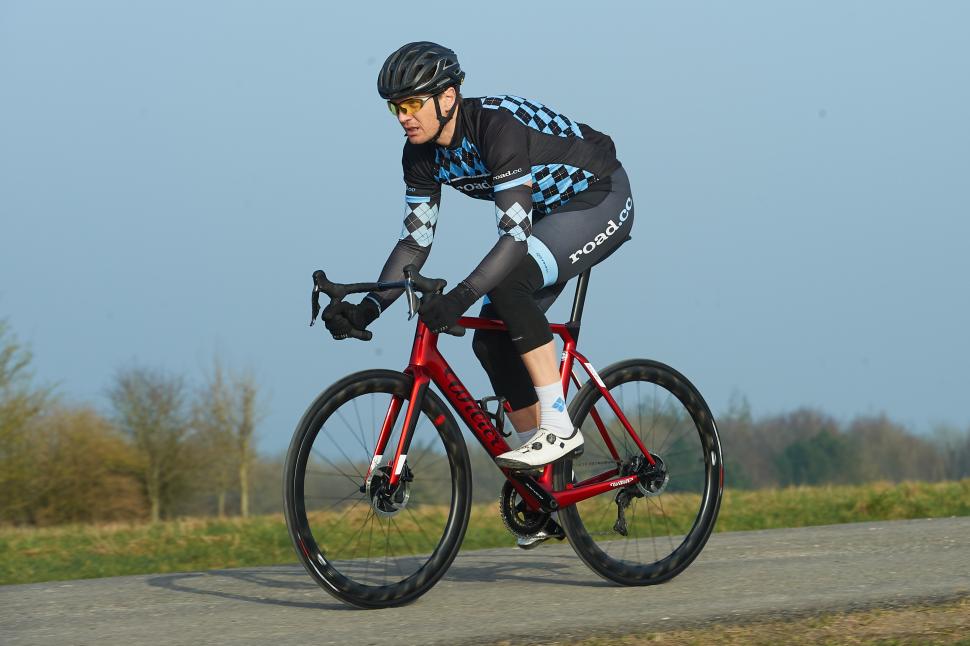



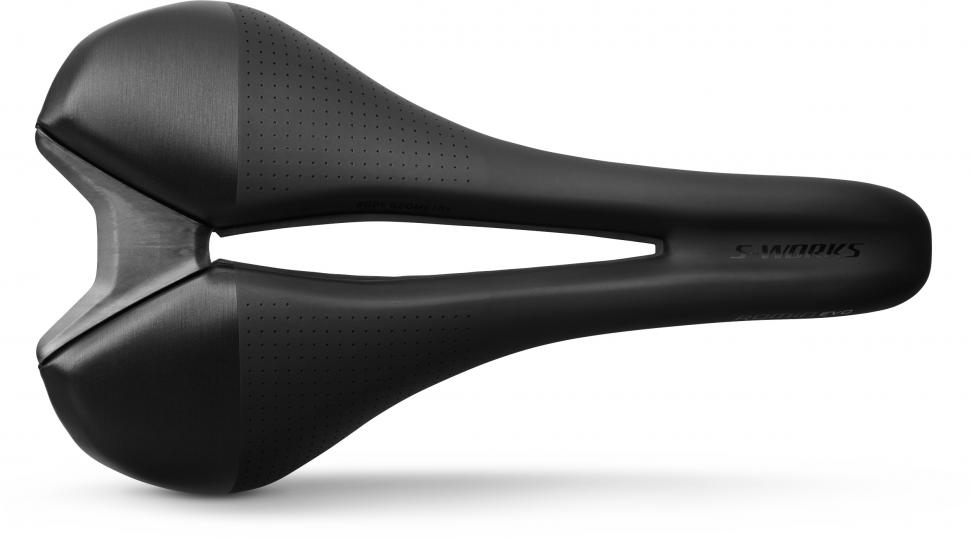



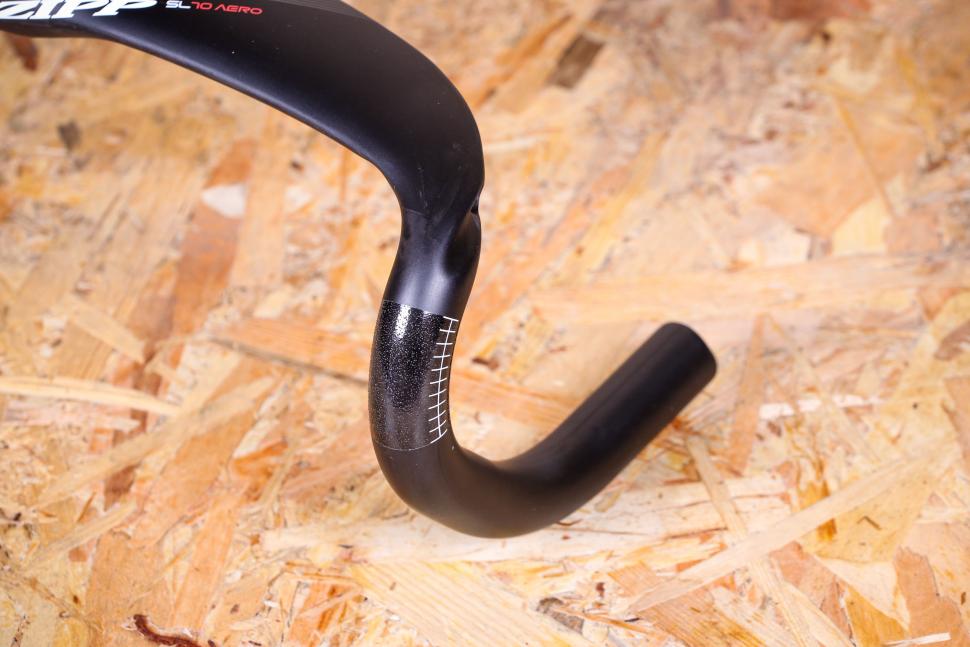




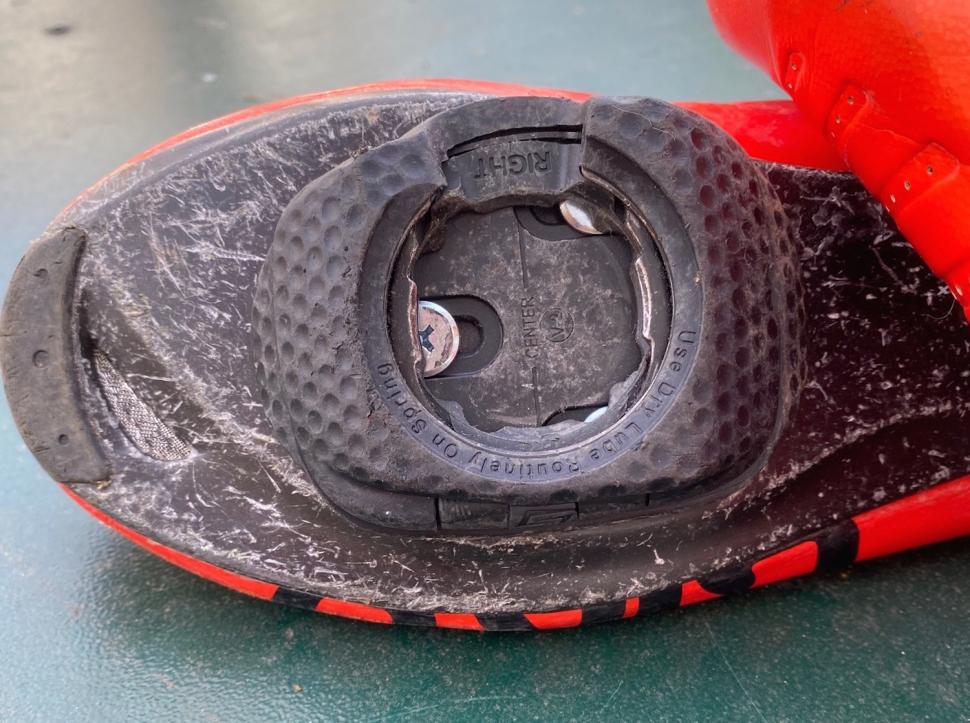



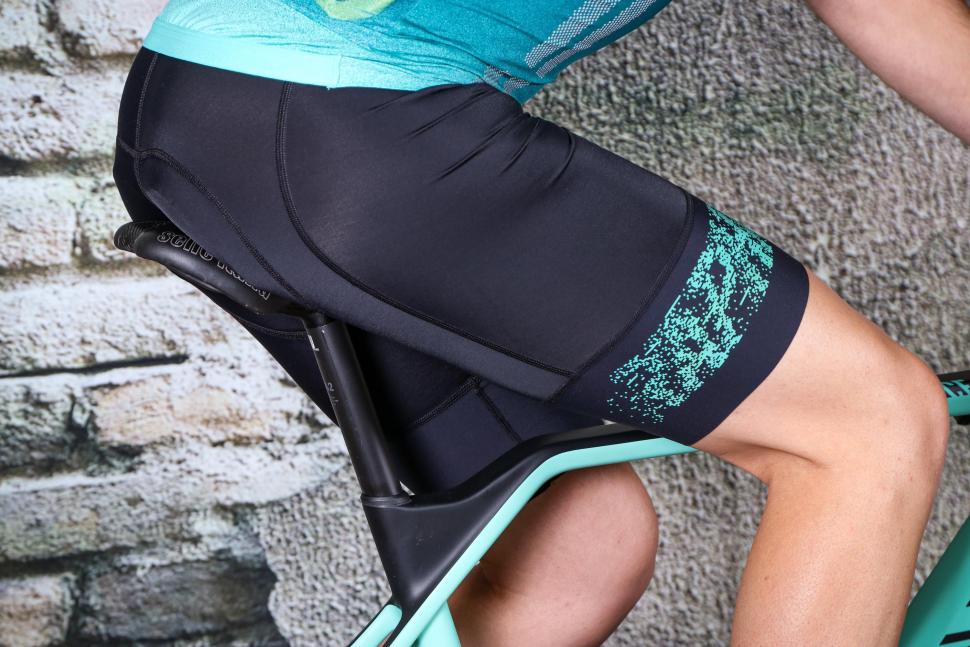
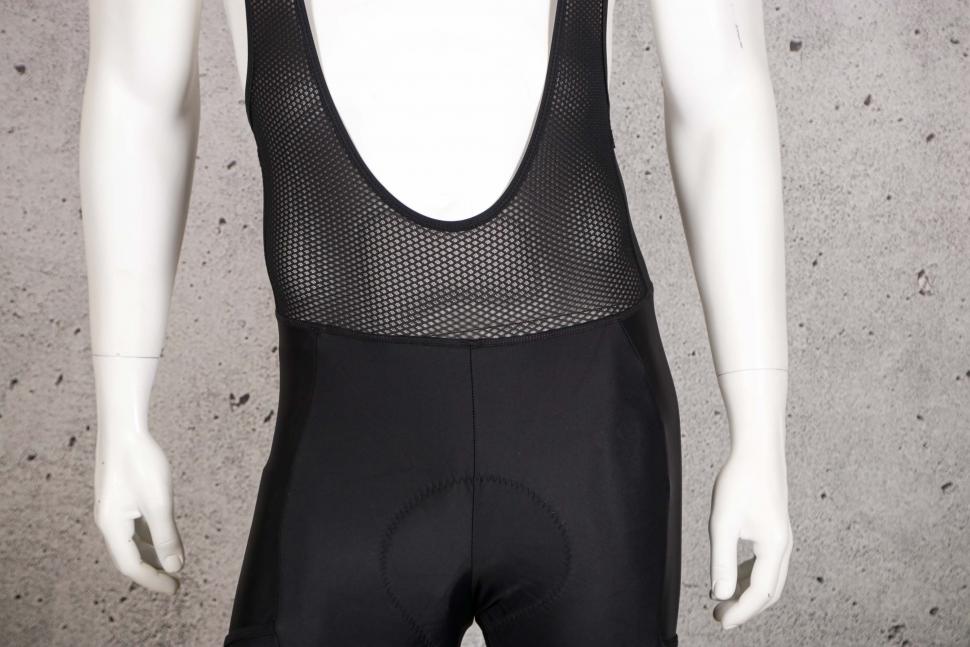
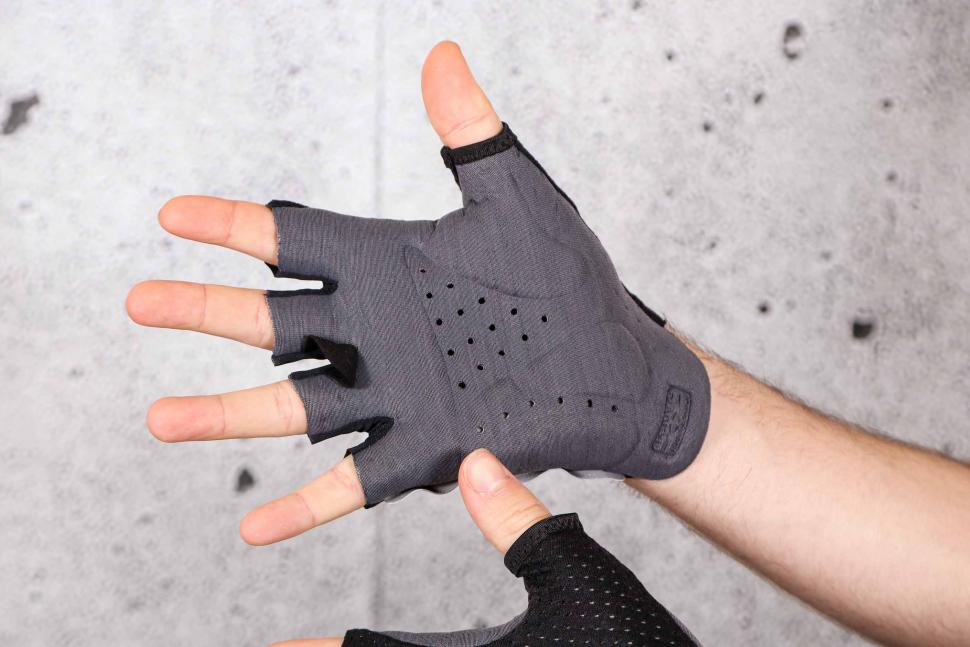

Add new comment
2 comments
15.
Partially cover your bike with a warm blanket and leave the light on in your garage.
Buy another bike to keep it company?